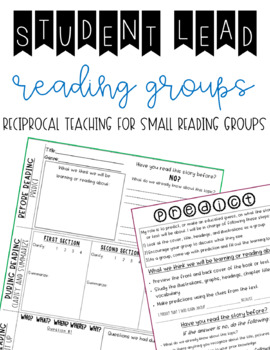Student Lead Reading Groups | Reciprocal Teaching | Reading Groups | Book Study
- PDF
What educators are saying
Description
These reciprocal teaching reading groups have changed how I do small reading group instruction. This is very similar to book studies, reciprocal teaching, literature circles, novel studies, close reading groups, and student book clubs. After doing a lot of research, I have found that student lead reading groups are what make the most difference in a student's reading. After completing the Iris Collaborative Strategic Reading (CSR) modules, I decided to piggy back off of their strategies and make them a little more teacher and student friendly. It helps with student comprehension skills by working on the following reading strategies: predicting, recalling information, context clues, summarizing, creating questions, asking questions, and determining the genre of the text.
Students follow guideline and steps as they read a book in a group of 4-6. They practice the strategies of predicting, clarifying (context clues), summarizing, creating questions, and asking questions. Each student is given a new role each day and is given explicit instructions on how to do each role with the Role Cards. On the back of their role cards, they have a learning log to help sort their thinking and follow the CSR steps. These learning logs go hand in hand with Collaborative Strategic Reading strategies. The roles for each group member are also included. I place these in a binder in sleeve protectors for each group and they fill them out everyday according to their roles. They can be given a reading group book or an article of any genre. This allows students to help each other learn and give the teacher more time in small groups to reach every student.
If you would like to do your own research, the link to the Iris modules for CSR is listed below. You can also check out how I use these in my classroom by following me on Instagram @shawintheclassroom


